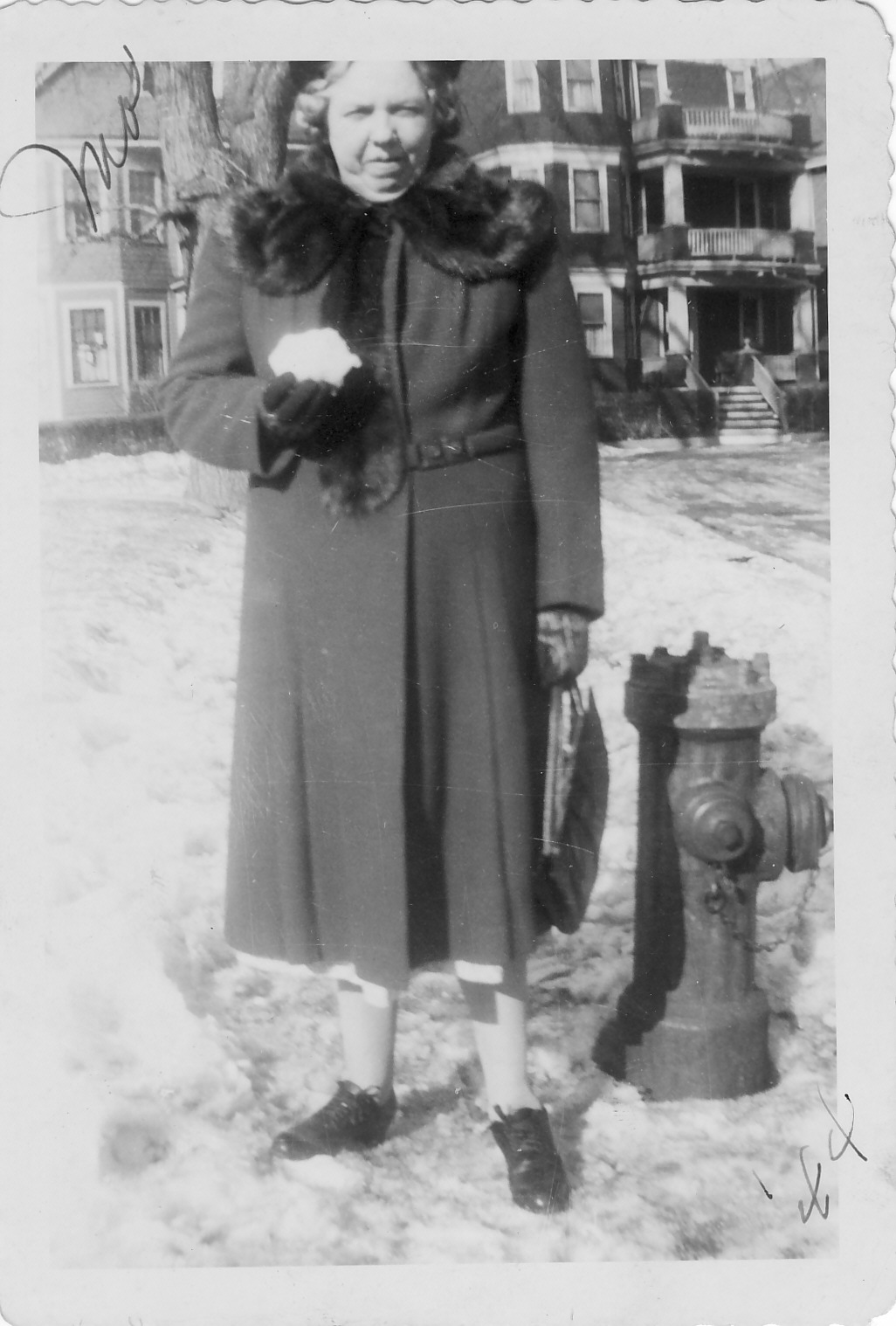 Annie Loughlin was born in Tierney, Gorumna Island, Galway, Ireland in 1898. She died before my birth, however, through the stories of her children, I feel a connection to her.
Annie Loughlin was born in Tierney, Gorumna Island, Galway, Ireland in 1898. She died before my birth, however, through the stories of her children, I feel a connection to her.
Tierney (spelled many ways) was on a small island off the southwest coast of Ireland. Since it was a rocky island that was not near the shore, it remained untouched by the English and remained a Gaelic island.
When Annie arrived in Boston about 1917, she brought with her Irish superstitions about fairies, banshees, marriages, pregnancy and death, not tainted nor diluted by English rule.
Annie married my great-grandfather Coleman Joyce in 1918. Their children were: Mary Agnes, (my grandmother), Bridget Josephine “Jo”, Eileen Veronica, Margaret Rita “Rita”, (Coleman Francis) “Frank”, John Joseph, Anna Theresa and Thomas Joseph.
Early in 1939, my grandfather proposed to my grandmother. That same year her sister Jo became engaged to Edmund Keohane. Annie insisted the first daughter need be married first or Jo’s wedding would be cursed. Not heeding the warning of her mother, Jo and Edmund planned their wedding four months before my grandparent’s wedding. The day after Jo and Edmunds marriage, the top headline in the local newspaper read: “Girl Weds Injured Fiancé as He Lies on Hospital Cot.” Edmund was involved in a car accident on his way to the church and broke his leg.
Jo and my grandmother were the best of friends. My grandmother asked her to be her maid of honor. Jo was pregnant and Annie forbade it. Pregnant women were not photographed or the child would be cursed. Jo heeded Annie’s warning on this occasion.
My grandmother’s next sister, Rita, stood in Jo’s place. Annie believed in Irish fairies which liked to collect beautiful things. Fairies were drawn mostly to brides. Annie insisted that every woman in a wedding party wear a small veil. This would confuse the fairies as they wouldn’t know which women was the bride until the couple was pronounced man and wife, and the brides veil was lifted from her face. That is why Rita wore a veil as well.
The Irish Banshee were another of Annie’s superstitions. Banshees would wail or weep to a family member warning them of an impending death in the family. I’m sure she believed someone was warned, however, they did not know what it was nor what it meant.
Annie’s husband Coleman Joyce died in 1953 and a traditional Irish wake was planned. An Irish wake is when the deceased is laid in the house where they lived or died. In this case, Coleman was washed and prepared and laid out on the families dining room table for friends and family to come pay their respects until his burial. The body needed to be watched so the soul was not stolen prior to the burial. My grandmother and her siblings took shifts watching over their dead father until the day of his burial.
Annie died on 24 July 1967 and her children had to decide what birth date to use. They knew she was born in 1898, however, after her first 4th of July, she changed her birth date so there would always be fireworks on her birthday. Unlike her husband, Annie was given a standard wake and burial. When she died, most of her superstitions died with her.
